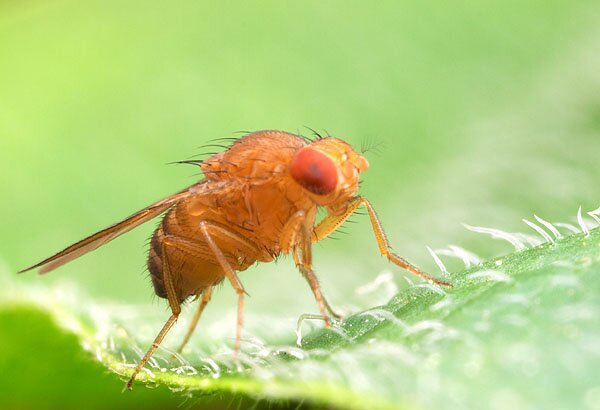Neuroscientists primarily use six model organisms when doing research. This post will examine these organisms and the advantages they provide scientists.
The model organisms are:
-Bacteria
-Yeast
-Arabidopsis
-C.Elegans
-Drosophila
-Mice
Why do we use these organisms, you might ask? Some advantages of using model organisms are:
They have powerful genetics -- this means small genomes, rapid life cycles, transgenic ability, and they make it easy for us to map mutations.
A few specifics for the three most widely used organisms...
 1. C. Elegans - have very few cells (<1000 total -- 302 neurons), optically transparent, rapid development cycles, and canonical cell lineage. They are cheap and we know their entire connectome. One of the more notable contributions of C.Elegans is the discovery of the Netrin pathway. Other contributions include the discovery of the cell death genetic pathway, trigger for RNAi & systematic RNAi, the insulin pathway, first multicellular animal to have a completed genome, discovery of Par genes, and MicroRNA.
1. C. Elegans - have very few cells (<1000 total -- 302 neurons), optically transparent, rapid development cycles, and canonical cell lineage. They are cheap and we know their entire connectome. One of the more notable contributions of C.Elegans is the discovery of the Netrin pathway. Other contributions include the discovery of the cell death genetic pathway, trigger for RNAi & systematic RNAi, the insulin pathway, first multicellular animal to have a completed genome, discovery of Par genes, and MicroRNA.

 2. Drosophila Melanogaster - have complex tissues and we can use sophisticated genetic techniques. They are also cheap and have a short generation time. We have sequenced their genome; drosophila has a rich history in the field of genetics. They are a great model for studying the fundamental concepts in cell biology, developmental biology, and genetics.
2. Drosophila Melanogaster - have complex tissues and we can use sophisticated genetic techniques. They are also cheap and have a short generation time. We have sequenced their genome; drosophila has a rich history in the field of genetics. They are a great model for studying the fundamental concepts in cell biology, developmental biology, and genetics.
3. Mice - closest to humans, genetically. We have sequenced their genome. Since they have a more sophisticated nervous system, mice are generally used for studying immune, nervous, endocrine, and cardiovascular systems.
The model organisms are:
-Bacteria
-Yeast
-Arabidopsis
-C.Elegans
-Drosophila
-Mice
Why do we use these organisms, you might ask? Some advantages of using model organisms are:
They have powerful genetics -- this means small genomes, rapid life cycles, transgenic ability, and they make it easy for us to map mutations.
A few specifics for the three most widely used organisms...
 1. C. Elegans - have very few cells (<1000 total -- 302 neurons), optically transparent, rapid development cycles, and canonical cell lineage. They are cheap and we know their entire connectome. One of the more notable contributions of C.Elegans is the discovery of the Netrin pathway. Other contributions include the discovery of the cell death genetic pathway, trigger for RNAi & systematic RNAi, the insulin pathway, first multicellular animal to have a completed genome, discovery of Par genes, and MicroRNA.
1. C. Elegans - have very few cells (<1000 total -- 302 neurons), optically transparent, rapid development cycles, and canonical cell lineage. They are cheap and we know their entire connectome. One of the more notable contributions of C.Elegans is the discovery of the Netrin pathway. Other contributions include the discovery of the cell death genetic pathway, trigger for RNAi & systematic RNAi, the insulin pathway, first multicellular animal to have a completed genome, discovery of Par genes, and MicroRNA. 
3. Mice - closest to humans, genetically. We have sequenced their genome. Since they have a more sophisticated nervous system, mice are generally used for studying immune, nervous, endocrine, and cardiovascular systems.
No comments:
Post a Comment